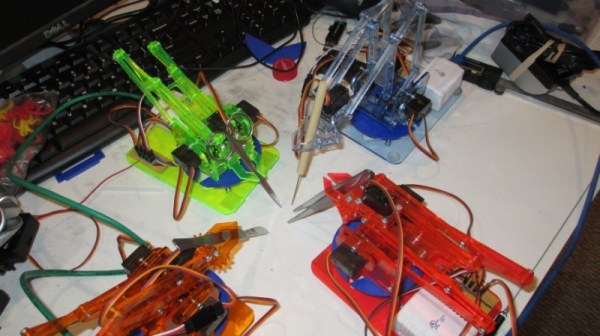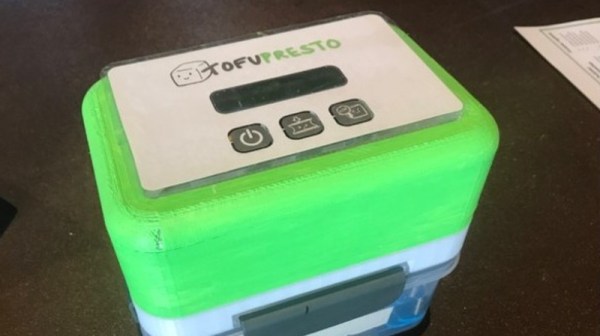We mentioned last week how robotaxi provider Cruise was having a no-good, very bad week, after one of their driverless taxis picked a fight with a semi, and it was revealed that amorous San Franciscans were taking advantage of the privacy afforded by not having a driver in the front seat. It appears that we weren’t the only ones to notice all the bad news, since California’s Department of Motor Vehicles issued an order to the company to cut its robotaxi fleet in half. The regulatory move comes after a recent Cruise collision with a fire truck, which injured a passenger in the taxi. Curiously, the DMV order stipulates that Cruise can only operate 50 vehicles during the day, while allowing 150 vehicles at night. We’d have thought the opposite would make more sense, since driving at night is generally more difficult than during daylight hours. But perhaps the logic is that the streets are less crowded at night, whereas daytime is a more target-rich environment.
hackathon45 Articles
Appeasing Chicken Tastes With 3D Printing
Like most of us, [Hunter] and his partner [Katyrose] have been in quarantine for the past few months. Unlike most of us, they spun a 3D printed chicken playground design hackathon out of their self-isolation. The idea is simple: to build a playground full of toys custom-tailored to appease each chicken’s distinctive taste. The execution, however, can be proven a little tricky given that chickens are very unpredictable.
For each of the four select chickens in their coop, the couple designed separate toys based on their perceived interests. One, showing a fondness for worms, inspired the construction of a tree adorned with rice noodles in place of the living article, and moss to top it off. For late-night entertainment, the tree is printed in glow-in-the-dark filament. The others were presented with a print-in-place rotating mirror disguised as a flower, and a pecking post covered in peanut butter and corn. As a finishing piece, the fourth toy is designed as a jungle gym post with a reward of bread at the top for the chicken who dares climb it. Since none of the chickens seemed interested in it, they were eventually hand-fed the bread.
With no other entries to their hackathon, [Hunter] declared themselves as the winners. The 3D files for their designs are available for their patrons to print, should they have their own chicken coops they want to adorn. While the hackathon might’ve been a success for them, their chickens in particular seemed unimpressed with their new toys, only going to show that the only difference between science and messing around is writing it down, or in this case, filming the process. If you’re looking for other ways to integrate your chickens into the maker world, check out this Twitch-enabled chicken feeder, or this home automation IoT chicken coop door. Meanwhile, check out the video about their findings after the break.
Continue reading “Appeasing Chicken Tastes With 3D Printing”
Hack The Quarantine, Not Just The Medical Equipment
As the COVID-19 pandemic invades in some way every corner of life, we’ve seen significant effort from the hardware community in considering the problem of inadequate supplies of medical equipment. The pandemic and its associated quarantine and lockdowns do not stop at medical supplies though, a whole host of problems associated with the whole population self-isolating are there to be solved. This makes Hack Quarantine, an online event that bills itself as “A global virtual hackathon”, particularly interesting. It’s encouraging its participants to look at the wider aspects of the whole thing rather than solely dreaming up an open-source ventilator design, because in the absence of clinical trials or indeed any experts in medical devices it’s possible that medical equipment from a hackathon might be of limited usability.
The hackathon will run from March 23rd to April 12th, and it already has a schedule of talks and workshops. We can’t help noticing a dearth of hardware-related stuff among all the software, and perhaps this could be where you come in. It’s something that never ceases to amaze us as Hackaday writers, the depth of hardware skill among our readership, and we’re guessing that plenty of you could bring something to this event.
We’ve brought you more than a few COVID-19 stories over the last few weeks. If this hackathon isn’t for you then can we point you at our Folding@Home team? Also, you may wish to look at the best fabric choice for your own face masks.
Don’t DIY This Surgical Robot At Home
The LVL1 Hackerspace in Louisville hosted a hackathon for useless and impractical devices a couple of years ago and this makeshift Duh-Vinci Surgical Robot was one of the “successful” results. While it’s not necessarily a project that should ever be used for its intended purpose, its miniature setup is certainly an interesting one.
The project builds on top of the MeArm Open Source Robot and a camera controlled by a Blynk board. Servos are wired into the base of each of the robotic arms for freedom in rotating. A separate microcontroller is used for the motor controllers for the arms and for the camera, partially due to the current draw for the camera power supply. The remote control system runs on an Android tablet and is used to control each of the arms.
The ESP32-Cam supplied video input is configured as a RTSP stream. As for the operation, while the movements are jerky and the range of dexterity limited, the robot is technically able to handle the sharps. Its final setup looks a bit like a deranged game of Hungry Hungry Hippos meets Operation and definitely not something to be making its way to surgical tables anytime soon.
A Wireless Method For Pressing Tofu
Tofu is a fairly common food in East and Southeast Asian cuisines, but it has also been making its way around vegetarian circles as a meat substitute. While it may be a more environmentally friendly source of protein than meat, it does have the unfortunate side effect of being fairly tedious to cook. To reach the right consistency, tofu requires hours of pressing to drain excess water, which tends to be tedious for most amateur cooks.
A team of students at HackMIT developed a contraption that incrementally presses tofu for you, using signals sent over WiFi to initialize the device. Several 3D-printed components extend an existing food container, along with a stepper motor, motor shield, Adafruit Feather HUZZAH, and a screen.
The motor steps at a rate of 30rpm once a signal is sent from a mobile application, causing four connected threaded rods to begin rotating. The tofu tray travels upwards to press against its lid, draining out excess water. A central gear box containers complementary cutouts that allow the tofu platform to travel vertically when shafts are rotated, pushed by nuts below the platform. The students also included a screen indicating time remaining, as well as a notification sent to the user once the tofu is finished being pressed.
It’s certainly a useful solution that will hopefully increase the popularity of tofu-based recipes!
Hackaday Links: November 10, 2019
In the leafy suburbs of northern Virginia, a place ruled by homeowner’s associations with tremendous power to dictate everything from the color of one’s front door to the length of grass in the lawn, something as heinous as garage doors suddenly failing to open on command is sure to cause a kerfuffle. We’ve seen this sort of thing before, where errant RF emissions cause unintentional interference, and such stories aren’t terribly interesting because the FCC usually steps in and clears things up. But this story is a little spicier given the source of the interference: Warrenton Training Center, a classified US government communications station located adjacent to the afflicted neighborhood. WTC is known to be a CIA signals intelligence station, home to spooks doing spooky stuff, including running high-power numbers stations. The interference isn’t caused by anything as cloak-and-dagger as that, though; rather, it comes from new land-mobile radios that the Department of Defense is deploying. The new radios use the 380-400 MHz band, which is allocated to the Federal Government and unlicensed Part 15 devices, like garage door remotes. But Part 15 rules, which are clearly printed on every device covered by them, state that the devices have to accept unwanted interference, even when it causes a malfunction. So the HOA members who are up in arms and demanding that the government buy them new garage door openers are likely to be disappointed.
Speaking of spooks, if you’re tired of the prying electronic eyes of facial recognition cameras spoiling your illusion of anonymity, have we got a solution for you. The Opt-Out Cap is the low-tech way to instantly change your face for a better one, or at least one that’s tied to someone else. In a move which is sure not to arouse suspicion in public, doffing the baseball cap deploys a three-piece curtain of semi-opaque fabric, upon which is printed the visage of someone who totally doesn’t look creepy or sketchy in any way. Complete instructions are provided if you want to make one before your next trip to the ATM.
It’s always a great day when a new Ken Shirriff post pops up in our feed, and his latest post is no exception. In it, Ken goes into great detail about the history of the 80×24 (or 25) line standard for displays. While that may sound a bit dry, it’s anything but. After dispelling some of the myths and questionable theories of the format’s origin – sorry, it’s not just because punch cards had 80 columns – he discusses the transition from teletypes to CRTs, focusing on the very cool IBM 2260 Display Station. This interesting beast used an acoustic delay line made of 50′ (15 m) of nickel wire. It stored data as a train of sound pulses traveling down the wire, which worked well and was far cheaper than core memory, even if it was susceptible to vibrations from people walking by it and needed a two-hour warm-up period before use. It’s a fascinating bit of retrocomputing history.
A quick mention of a contest we just heard about that might be right up your alley: the Tech To Protect coding challenge is going on now. Focused on applications for public safety and first responders, the online coding challenge addresses ten different areas, such as mapping LTE network coverage to aid first responders or using augmented reality while extricating car crash victims. It’s interesting stuff, but if you’re interested you’ll have to hurry – the deadline is November 15.
And finally, Supercon starts this week! It’s going to be a blast, and the excitement to hack all the badges and see all the talks is building rapidly. We know not everyone can go, and if you’re going to miss it, we feel for you. Don’t forget that you can still participate vicariously through our livestream. We’ll also be tweet-storming and running a continuous chat on Hackaday.io to keep everyone looped in.
Rapidly Prototyping Prosthetics, Braille, And Wheelchairs
We live in an amazing time where the availability of rapid prototyping tools and expertise to use them has expanded faster than at any other time in human history. We now have an amazing ability to quickly bring together creative solutions — perfect examples of this are the designs for specialized arm prosthetics, Braille printing, and custom wheelchair builds that came together last week.
Earlier this month we published details about the S.T.E.A.M. Fabrikarium program taking place at Maker’s Asylum in Mumbai. The five-day event was designed to match up groups of makers with mentors to build assistive devices which help improve the condition of differently-abled people.
The participants were split into eight teams and they came up with some amazing results at the end of the five-day program.
Hands-On: Prosthetic Designs That Go Beyond
Three teams worked on projects based on Bionico – a myoelectric prosthesis
DIY Prosthetic Socket – a Human Machine Interface : [Mahendra Pitav aka Mahen] lost his left arm during the series of train bomb blasts in Mumbai in 2006, which killed 200 and injured over 700 commuters. He uses a prosthetic arm which is essentially a three-pronged claw that is cable activated using his other good arm. While it is useful, the limited functionality restricted him from doing many simple things. The DIY Prosthetic socket team worked with [Mahen] and [Nico Huchet] from MyHumanKit (who lost his right arm in an accident 16 years back), and fabricated a prosthetic forearm for [Mahen] with a modular, 3D printed accessory socket. Embedded within the arm is a rechargeable power source that provides 5V USB output at the socket end to power the devices that are plugged in. It also provides a second port to help recharge mobile phones. Also embedded in the arm was an IR reflective sensor that can be used to sense muscle movements and help trigger specific functions of add-on circuits, for example servos.
Continue reading “Rapidly Prototyping Prosthetics, Braille, And Wheelchairs”




















